Keelboat, Sportboat, or Dinghy
Technically, a keelboat is any sailboat with a weighted keel. Since a sportboat has a weighted keel, a sportboat is really just a type of keelboat. Typically, compared to other keelboats, the sportboat has a lower ballast/displacement ratio, higher SA/D ratio, and limited or zero facilities for extended stays aboard (translation: no head, no galley, maybe no bunks). As the name implies, sportboats trade comfort and durability for greater performance. Dinghies are in a category of their own, because dinghies are not keelboats. Dinghies use unballasted centerboards or daggerboards, relying entirely on crew weight for righting moment to oppose the rotational force of the wind on the sails.
The next question is usually “What’s the best kind of sailboat?” or “What kind of sailboat should I buy?” I usually answer (with a grin) “one you enjoy sailing.”
Not surprisingly, the Puur 17 doesn’t really fit neatly into any of the traditional categories. That is because I designed her with a focus on sailing rather than a focus on categories. The Puur 17 is a comfortable boat, strongly built, but very nimble and efficient - with just enough keel ballast to self-right from 110 degrees. She’s smaller and lighter than most sportboats, but she also has a significantly lower SA/D than any true dinghy. And, though she’s ballasted, she’s unsinkable — even if you cut the boat in half. A self-righting dinghy? An unsinkable keelboat? A comfortable, solidly-built sportboat?
The Puur 17 does not fit neatly into any of the ordinary categories of sailboats.
I’m ok with that. If you’re shopping for a sailboat, you need to find a sailboat that works for you — not one that checks standardized boxes while missing your needs. So, it’s probably a good idea to avoid marketing labels and rely on specific descriptions. Here’s a specific description the Puur 17.
The Puur 17 is well-built, comfortable, unsinkable performance daysailer, with a ballasted lifting keel. It is self-righting in most circumstances. It’s an easily trailerable sailboat for almost any tow-capable vehicle. It has a relatively modest sail plan, a self-tacking headsail, and relatively more of its sail area in the headsail, all of which together make the boat easier to manage in difficult wind conditions. It has significantly thicker NACA sections for the keel and rudder compared to any small boat on the market, giving it more maneuverability around the dock and better VMG efficiency in light and moderate wind. It’s a fun boat to sail in almost any wind conditions, and it’s a sailboat the kids can take out on the lake alone safely.
That’s a great combination, whatever you call it.

